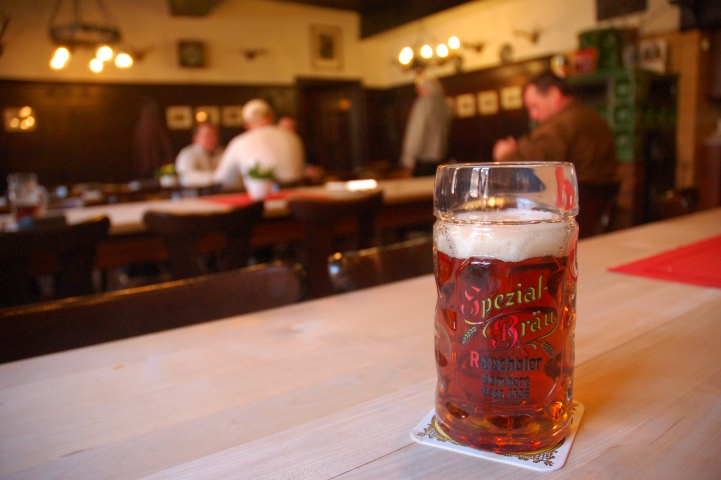
There’s a lot more to Bamberg than just Rauchbier — the town is said to produce brews in some 50 different styles, including the buzz-worthy U, aka Ungespundetes, an “uncorked” or “unbunged” style of Kellerbier best-known in the versions from Mahr’s and Spezial, as well as very good wheats from places like Kaiserdom. If you’re tempted to take something home with you, the very last chance before you leave town is a small shop in the train station with bottles of Aecht Schlenkerla Rauchbier as well as one of the local oddballs: Zwergla from Brauerei Fässla.
The Fässla pub was one of my favorites on my first trip to Bamberg, if only for the atmosphere, as I got caught up in conversations with the Stammgäste there. And while Zwergla’s “Lil’ Dwarf” moniker is fairly distinctive, I couldn’t remember ever trying it. Grabbing a bottle in the Bahnhof, I figured I’d check out what I missed and compare it to some beers from back home.











